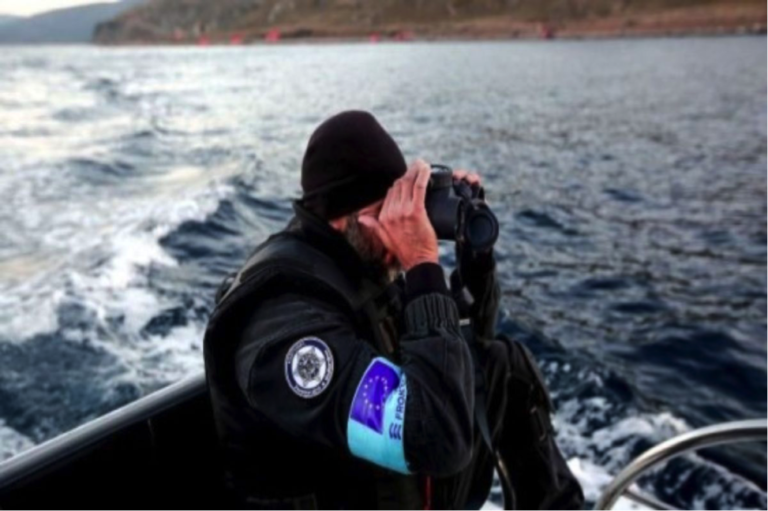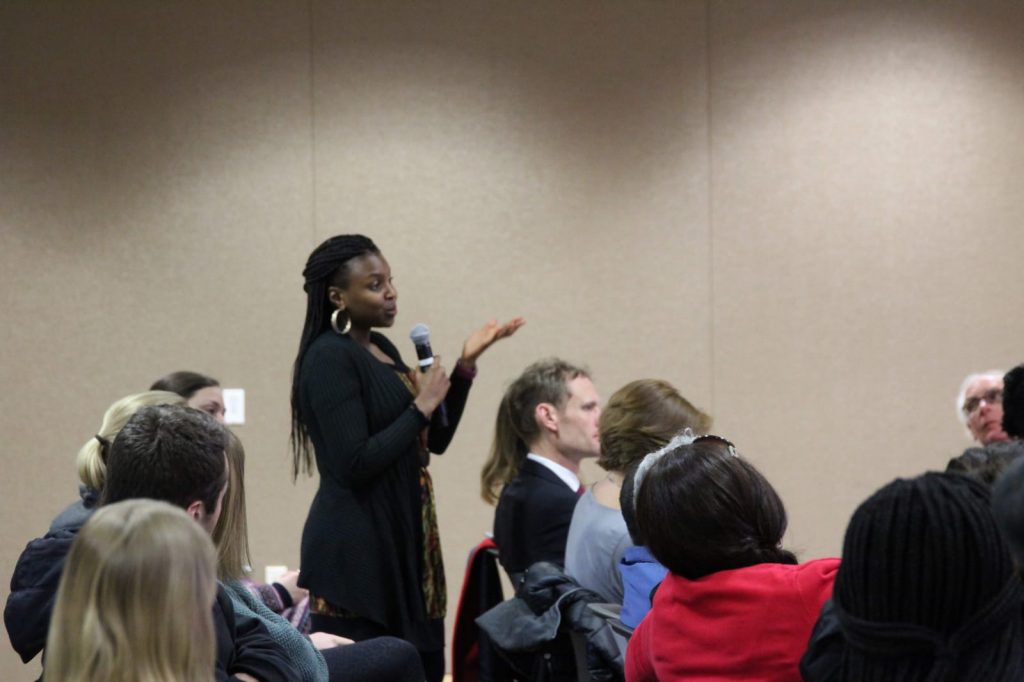(Eu)Roped In: The Side-Lined Dimensions of Nigerian Victims of Sex-Trafficking

Wendy Appenteng Daniels, Research Analyst, Youth, Gender & Vulnerability Policy Lab
wadaniels@africacfsp.org
The year 2015 was labelled as the year of the “European migration crisis” owing to the elevated numbers of economic migrants, refugees, and asylum seekers attempting to enter the continent. Women represent a significant group in the migration flows of the Mediterranean; however, the complexity underlying their identities and realities has been poorly captured in policy documents. This piece uses religion as a tool to critically analyse the pre-migratory and post-migratory contexts of Nigerian women by adopting an intersectional lens. It simultaneously denounces the epistemic tendency to exclude religion from intersectional frames of reference.
Pre-Journey Oath: The Invisibility of Religion in European Migration Policy
“Hustle no dey kill, na juju dey kill us” (Our hustle is not what kills us, instead juju is killing us). This is the emphatic Pidgin title of an article in one of Nigeria’s most read daily newspapers, The Nation. The article recounts the story of a former Nigerian sex-worker in Spain and delves into the ritualistic details of a juju blood oath that introduced her to the trans-continental human trafficking business. Nigerians began to migrate to Italy in the late 1980s in response to a high demand for low-skilled labour in the agricultural and elderly care sectors. However, according to Jørgen Carling, as European restrictions tightened, so too did the state of prospective migrants become more precarious and heavily reliant on large loans to illegally finance their journeys. This inaugurated a season of international migrant exploitation entangled with domestic platitudes of nationalism and xenophobia.
In 2015, the European Commission produced the European Agenda on Migration, a policy document formulated in response to the refugee crisis. The paper was reviewed in a 2018 report to assess if religion and gender intersectionality were adequately addressed. Intersectionality, in simple terms, is the recognition that individuals can face overlapping forms of oppression and disadvantage based on factors such as socio-economic background, gender identity, and other identity markers.
A case in point analysed in the European Agenda on Migration was the trafficking of Nigerian women in mixed migration flows in Italy. According to the International Organisation of Migration (IOM), a mixed migration flow is a complex migratory population movement that includes asylum seekers, economic migrants, and refugees. It is used to capture the wide spectrum of migrants as opposed to analysing only one category.

The number of international migrants from Nigeria increased from around 450,000 in 1990 to 1.4 million in 2019, with the population of Nigeria in the latter year being 201 million. 31% of Nigerian migrants sought entry into Europe. In fact, according to Frontex, the European Union’s border management agency, in 2017, 1 out of 7 irregular migrants in Italy came from Nigeria via the Central Mediterranean route. It is against this backdrop that in 2017 the IOM estimated that 80% of women arriving from Nigeria to Italy were potential victims of trafficking for sexual exploitation.
According to the 2018 report, the European Agenda on Migration adopted neutral language and homogenised experiences, resulting in the implementation of ineffective polices. The intersectional dimension for trafficked women lies at the crossroads of gender, religion, ethnicity, and their migrant status. Religion – particularly juju, a form of Voodoo Animism in West Africa – is used by traffickers to ensure that their victims remain loyal to them. Through priestly rituals and oath-taking, intimidation is used as a tool of coercion. This compounds with their concomitant precarious axes of oppression, creating a deadlock of female migrants stuck in cycles of trafficking and prostitution. However, this complexity is rendered invisible owing to EU migration policies that uphold a securitarian frame that prioritises national security over compassionate migration policies that protect the human rights of trafficked people. Nonetheless, in practical terms, certain policy decisions are hard to dislodge. As noted by Stan Liebowitz, a professor of managerial economics at the University of Dallas, a suboptimal policy process becomes hard to reverse once it begins.
Intersectionality: Remedy to a Social Blind Spot
Intersectionality was formally conceptualised by Kimberlé Crenshaw, a UCLA professor and civil rights advocate, at the convergence of critical race and feminist theory. It was also an analytical framework that emerged from a critique of the confining approach of legal doctrine and its inability to capture and cater for the compounded discrimination of Black women segregated by race and gender. Its critical weight allows it to transcend disciplinary boundaries and go beyond its origin. Intersectionality recognises that power and identity are interrelated, causing people to occupy multiple concurrent, and sometimes oppositional, social locations that operate together to exacerbate each other. The overlapping social locations generate heightened oppression and their interaction affects political access and equality. Consequently, intersectional analysis is a fertile opportunity for policymakers to rectify the invisibility of marginalised categories that are inadequately accounted for. In a critical re-reading of academic feminist history, Elina Vuola offers a new perspective by asserting that Crenshaw’s intersectional theory stems from the early feminist liberation theology of the 1970s. Her intended research aim is to “correct a long-held understanding of the history of feminist theorizing as purely ‘secular.’”
While intersectionality can recalibrate the focus of these policies, it also pushes us to scrutinise the conversation further. Although an intersectional lens allows for subtleties within policymaking to come to the fore, this approach needs to be culturally sensitive. For example, some of the women who undergo the Voodoo oath swearing rituals (so that they may be spiritually committed to repaying their smugglers), do not see the practice as entirely negative. Field research conducted in Nigeria has shown that this is not seen as exclusively intimidating; rather, it is a belief system that manifests as a living contradiction. On the one hand, it reveals worrisome stories of coercion and intimidation. On the other, these oaths and rituals are the product of a religion – a meaning-making system that is sought after for propitiation, empowerment, and protection. Indeed, it is considered by some of the victims as a necessary “African insurance.”
Labelling Voodoo as an “African insurance” is a fitting yet ironic metaphor. An insurance has a protective, financial, and preventive function. In economic terms, it is a contract in which an individual receives financial protection against losses from an insurer. While the Voodoo rites that these migrant women undergo formally fulfil the functions of an insurance (protective, financial, and preventive), we can notice a paradoxical power imbalance in the contract. In fact, the victim enters the contract believing that they are the insured. In reality, they are both the insured and insurer, and the trafficker becomes the insured.
The victims perceive to be insured because of the assurance of a better life abroad by the traffickers and the religious authority of the fetish priest. However, the traffickers are the ones receiving cash inflows through the premium paid by the victims. The imbalanced power dynamic at work is downplayed as there is a tacit consensus that resorting to religious syncretic options is culturally embedded in the social fabric. For this reason, there is nothing extra-ordinary about these practices according to the women and “African insurance” simply means normal insurance, with the word “African” used only to accommodate a foreign interlocutor. At a first reading, this might seem illogical, but these choices exemplify an observed behaviour called prospect theory. When faced with decision-making, people are more willing to take higher risks to avoid loss; in this case, the loss would be missing out on a new life in the West.
The female migrants are roped into Europe, but to interpret the juju practices as synonymous with coercion deprives the victims of their agency and frames intersectionality as a pretentious projection of assumptions rather than a tool to grasp individual self-perception. This is not to discredit the value of intersectional analysis, but to encourage even more expansive aspects of identity, especially in the African context. These indigenous beliefs co-exist with Christian beliefs and the pacts are sometimes sealed by prayer ceremonies in the Pentecostal churches that the victims attend.

Post-Journey Shame: Deportation and Moral Governance
Despite both the physically and spiritually arduous means through which migrants arrive on European shores, deportation is a reality. While the repatriation of migrants is seen as a mere migrant management mechanism, this process in the Global South acquires a new religious undertone that further highlights how strongly religion is an ulterior intersectional layer in the female migrant’s social location.
In 2017, Danish anthropologist Sine Plambech interviewed female deportees in Benin City who had been repatriated to Nigeria through IOM’s Assisted Voluntary Return and Reintegration (AVRR) programme. Her empirical study included interviews with 30 women, ranging from ages 19 to 35, as well as social workers. The study concluded that the religious social workers such as nuns, tasked with assisting the re-integration of the migrants, used the AVRR programme to brand the former sex-worker migrants as immoral and a threat to Nigeria’s public image. The deportation of the trafficked victims is re-cast in a new light. In Nigeria, the female migrant experience becomes entangled with the ideas of nation branding. This is defined as a “… country’s whole image on the international stage, covering political, economic and cultural dimensions.” The deportees are thus shamed for their immoral mobility abroad. The return home of former trafficked women is “God bringing them back home.” In line with the religious language invoked by the social workers, deportation becomes a form of expiation for the shame they have brought to themselves and by extension the whole nation. Not only are the women stigmatised on an individual level, but in a misleading way they are made the only culprits of their situation. In this language of condemnation, the traffickers suddenly disappear from the accusation and the victims bear the sole responsibility of the country’s reputation. Therefore, coming back home becomes a reality check, a necessary “Christian” bounce back to humility to curb the lifestyle of vanity and greed sought abroad.
Conclusion
On a practical note, policymakers should intervene by interrupting the “re-victimisation cycle.” This can be achieved through policies that shift their attention on traffickers and seize assets gained from sex-trafficking activities. The money in turn should be invested to create specialised lay centres with cultural mediators and a network between Sub-Saharan Africa and destination countries in Europe that can rehabilitate and empower female migrants post-rescue. (These should be in EU countries directly involved in the Central Mediterranean route). Building a transcontinental network would also allow for a better understanding and close monitoring of cross-border activity.
By tracing the context of Nigerian sex-trafficking victims in the Central Mediterranean route, this piece has sought to bring religion to the forefront in an intersectional analysis. I presented the two different yet connected pre- and post-migratory experiences to emphasise how religion is crucial to understanding female migrant vulnerability in context. There is a tendency to demonise Voodoo without understanding it on its own terms, and ultimately such an attitude side-lines the reality of victims. This is a call for policymakers to de-exoticise their perceptions and correct the unspoken plight of female sex victims.
The migratory experience is a journey dotted with resilience and vulnerability. While intersectionality is useful to uncover the reality of subjugated categories of people, the case of female Nigerian migrants has shown the need for a more concrete understanding of the interplay between religion and other identity markers beyond a Westernised gaze.
Based on your interests, you may also wish to read:
- Women as Peacemakers in Senegal – Voices To Be Heard
- Kenya Should Adopt Comprehensive Sexuality Education to Address the Vulnerability of Girls to Early Pregnancies
- Burkinabe Men in Collective Action Against Gender-Based Violence
- Race in Sudan and South Sudan Part 1: Intersectional and Cross-sectional


